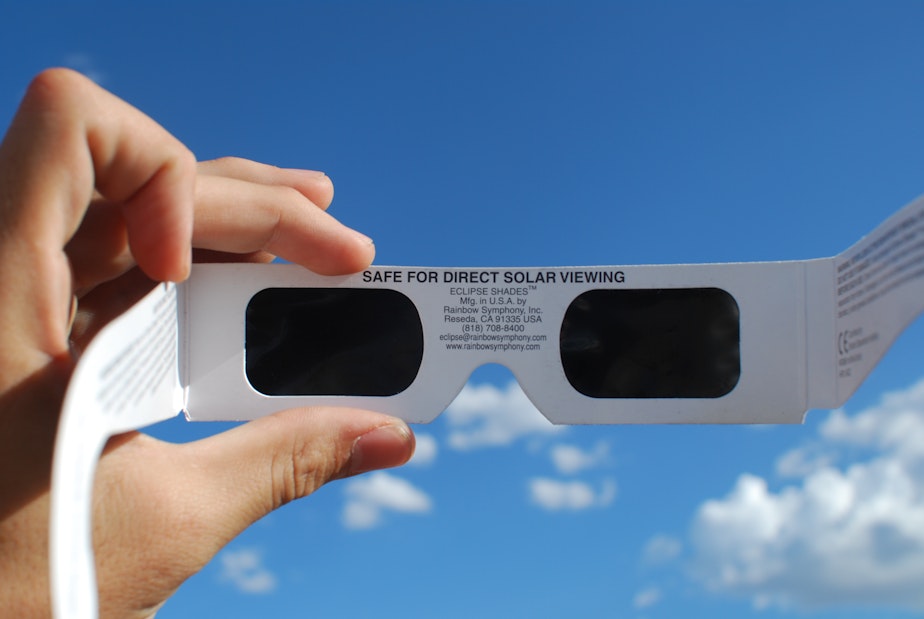Eclipse in Seattle: Expect big dip in temperature

What will the eclipse be like for those in the Puget Sound region?
In the Northwest, we can only see the total eclipse in parts of Oregon and Idaho. In the Puget Sound area, about 90 percent of the sun will be hidden. What will that be like and where and how should you view it? Bill Radke talks to Erika Harnett, research associate professor of earth and space science at the University of Washington about all things solar eclipse.
What will the eclipse be like for those in the Puget Sound region?
Well this is based on my 20 years of experience of watching partial eclipses in Seattle. Any partial eclipse we have ever had, one of the things I have noticed is if it was not cloudy to begin with, it is cloudy during part of the eclipse.
As the moon starts to move in front of the sun, you'll actually notice a decrease in the air temperature. In Washington state you can experience almost 10 to 15, maybe even up to 20 degrees, decrease in temperature. Even with a few degrees temperature change, it will change the dew point in the air, and because we're near water, a marine layer forms over Puget Sound and then starts blowing in.
Sponsored
And then suddenly what was a clear view of the partial eclipse becomes a clouded view.
I would say if you have the opportunity to get away from Puget Sound to avoid a marine layer if it forms, I would do that. That's why when I knew this was coming, my first thought was, we're going east of the mountains, because I wanted some mountains between me and a marine layer.
Can you look at the sun with your naked eye during the eclipse?
During totality, yes. But you have to be someplace where totality is occurring and ONLY at the time of totality is it safe for you to look at the sky without special protection.
Sponsored
If you're in the path of totality, when do you know it's safe to take your safety glasses off?
Right before totality you will see something called Bailey's Beads form. It's just a fancy name for a little bit of light that will actually be able to move through valleys on the moon. You'll see the moon covering the sun and right before totality, you'll see little spots of light.
When those spots of light go to a single beam of light, it's called the diamond ring. When those all disappear, that should be the time when it is safe to remove your glasses — if you are in totality. If you can see an extended wispy atmosphere that appears very unworldly then it's definitely safe because you cannot see the corona — the solar atmosphere — if the sun is not completely blocked.
How long does that time period last?
It will vary depending where you are. In Oregon it will last about two minutes and ten seconds, for people on the East Coast who are in totality, that time is going to be about two minutes and forty seconds.
Sponsored
How can you tell if your glasses are fake?
They should be so dark you can't see anything through them. The best way to test them is to start gradually looking up at a light source. If you put them on and look at a very bright light in your house and you cannot see that light at all, you're getting close. And then you'll want to look at a reflection of the sun on a car hood or something outside. And if you cannot see that sunlight being reflected off of that surface you're even closer to knowing if they are fake or not.
Where can I still get glasses and what if I want to make them myself?
Glasses are hard to come by right now. A lot of vendors have sold out online and there are a lot of fake glasses on the market, but you can also easily make your own eclipse viewer. There might be some events at the Seattle Public Library and Pacific Science Center where eclipse glasses will become available.
Editor's note: Seattle Public Library handed out 7,500 pairs of glasses and is now out.
Sponsored
Harnett will travel down to Oregon with a fellow University of Washington scientist to view the total solar eclipse. They will release observational balloons as part of the Northwest Earth and Space Science Pipeline project that is funded by NASA.

